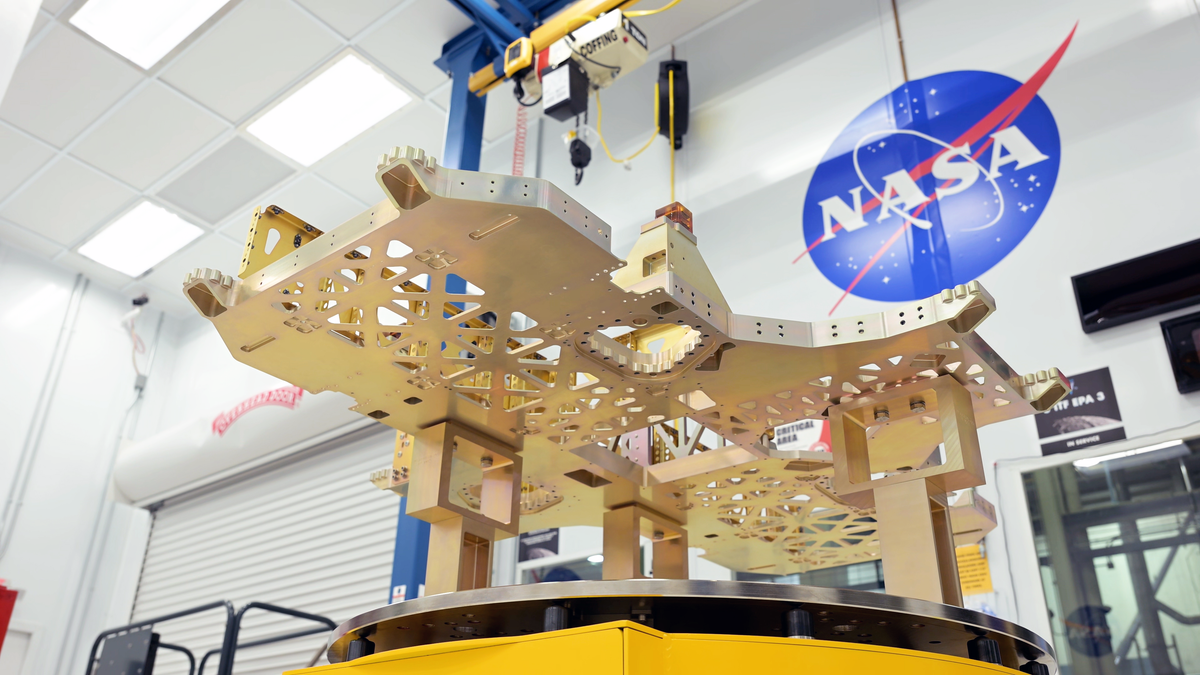
NASA engineers are making progress on the agency’s Moon rover, which could begin its lunar adventure on the rocky satellite sometime in the mid 2020s.
The Volatiles Investigating Polar Exploration Rover (or VIPER) is a four-wheeled robot whose mission is to find and study water ice on the Moon’s South Pole. The 1,000-pound rover is being assembled at the Johnson Space Center in Houston, Texas.
According to a NASA release, the rover’s lower chassis plate and parts of its frame have now been installed; it is literally the foundation on which the rest of the rover will be built.
“We’ve just completed the first few steps integrating rover components that will one day be on the surface of the Moon,” said David Petri, the system integration and test lead for the rover, in the release. “Hardware is coming in from all over the world, including some manufactured at several NASA centers—it’s really ‘go’ time.”
While VIPER is being assembled at Johnson Space Center, elements of the rover are being built elsewhere. Its software brains are being developed at the Ames Research Center in California, for example.
VIPER’s planned arrival date on the Moon is November 10, 2024, a date chosen to optimize the amount of solar power the rover can collect. The mission is planned to last 100 days.
“As it prospects for ice from the surface, VIPER’s findings will inform future landing sites under Artemis by helping to determine locations where water and other resources can be harvested to support a long-term presence on the Moon,” according to NASA.
More: Vacuum-Sealed Container From 1972 Moon Landing Will Finally Be Opened
Some of that exploration will see VIPER delve into permanently shadowed craters on the Moon, cold recesses of the body in which ice has sat for billions of years. For this reason, VIPER will be the first NASA rover to get a pair of headlights. The golf-cart-sized Moon rover has a distance goal of 12 miles.
Should the rest of the rover’s assembly go smoothly, it will be delivered to Astrobotic, a Pittsburgh-based aerospace company, in mid 2024. VIPER will be delivered to the lunar surface by Astrobotic’s Griffin lander, on a Falcon Heavy launch vehicle produced by SpaceX.
For more spaceflight in your life, follow us on Twitter and bookmark Gizmodo’s dedicated Spaceflight page.






